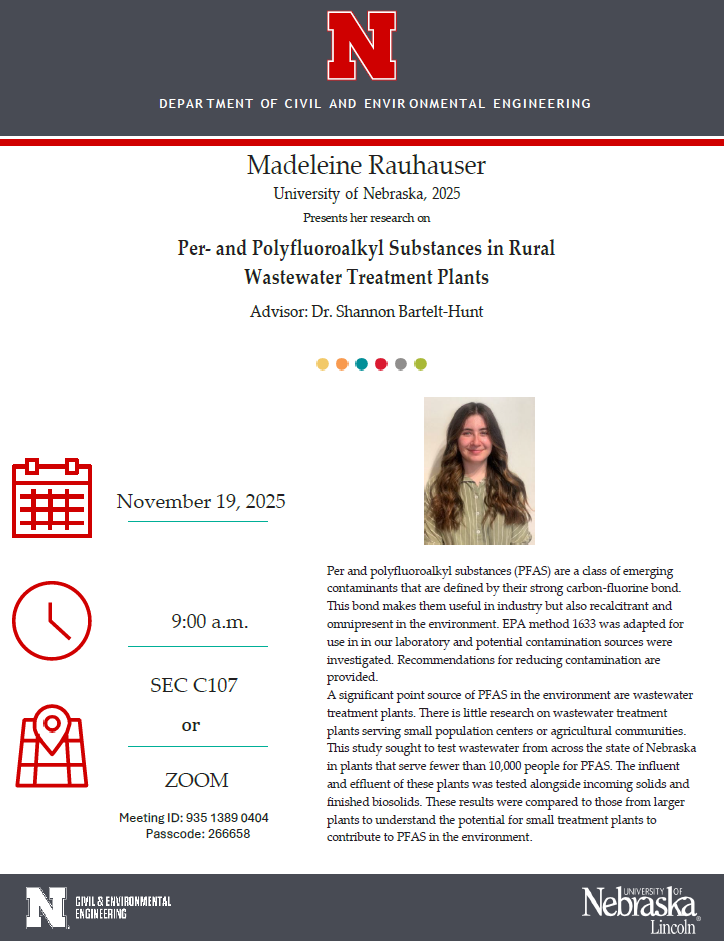
Scholar: Madeleine Rauhauser
When: November 19th at 9:00am
Where: SEC C107
Zoom: 935 1389 0404
Passcode: 266658
Title: Per- and Polyfluoroalkyl Substances in Rural Wastewater Treatment Plants
Abstract: Per and polyfluoroalkyl substances (PFAS) are a class of emerging contaminants that are defined by their strong carbon-fluorine bond. This bond makes them useful in industry but also recalcitrant and omnipresent in the environment. EPA method 1633 was adapted for use in in our laboratory and potential contamination sources were investigated. Recommendations for reducing contamination are provided.
A significant point source of PFAS in the environment are wastewater treatment plants. There is little research on wastewater treatment plants serving small population centers or agricultural communities. This study sought to test wastewater from across the state of Nebraska in plants that serve fewer than 10,000 people for PFAS. The influent and effluent of these plants was tested alongside incoming solids and finished biosolids. These results were compared to those from larger plants to understand the potential for small treatment plants to contribute to PFAS in the environment.